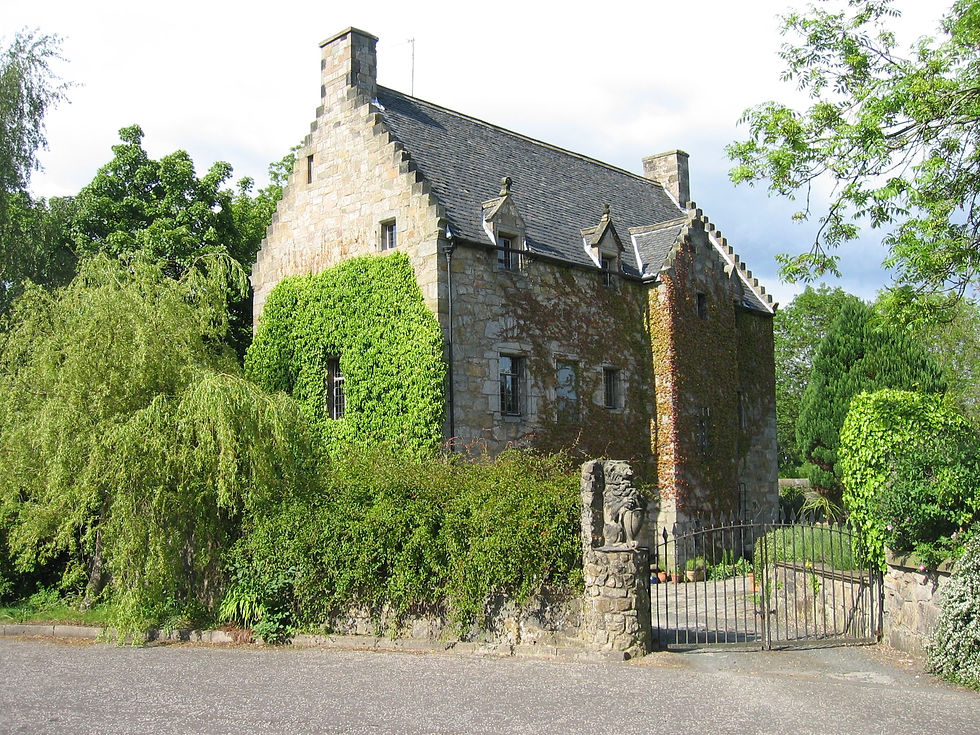Paisley, a town rich in history and cultural heritage, is adorned with several historic mansions, each telling a unique story of its economic prosperity and societal transformations. From the architectural marvels of Barshaw House to the hidden gems like Stanely Castle, these estates reflect Paisley's vibrant past from medieval times to the industrial age. This comprehensive article delves into the histories, architectural details, and legacies of these significant properties.

Barshaw House: A Legacy of Philanthropy and Service
History and Transformation
Originally built in the early 1800s by Robert Smith and later expanded by James Arthur, Barshaw House evolved from a private residence into a community-serving facility. Post-WWI, it served as a military hospital, later becoming a maternity and then a geriatric hospital before being converted into flats.
Philanthropic Impact
The Arthur family, associated with Barshaw, were notable for their contributions to education and welfare, reflecting their deep commitment to Paisley's social advancement.

Blackhall Manor: Royal Ties and Historical Significance
Early Beginnings
Dating back to the 12th century, Blackhall Manor originally served as a hunting lodge for the High Stewards of Scotland. It is renowned for its connections to the royal Stewart family, making it a site of considerable historical interest.
Architectural Evolution
The manor, while modest in size, has a rich history that includes being passed through generations of the Stewart family, eventually becoming a private residence that was carefully restored in the 20th century.

Ferguslie House: Industrial Magnates and Community Benefactors
Industrial Connection
Built in 1828 and later expanded, Ferguslie House was closely linked with the Coats family, whose thread manufacturing business was instrumental in shaping the industrial landscape of Paisley.
Community Contributions
The Coats family used Ferguslie House not only as a residence but also as a venue for philanthropy, significantly impacting local welfare and cultural initiatives until its demolition in 1920.

Gallowhill House: From Industrial Base to Baronial Splendor
Industrial Roots and Expansion
Gallowhill House, initially part of an industrial estate, became the residence of prominent local industrialists. The house reflected the prosperity brought about by Paisley's thriving industries.
Architectural Features
Built in the French Baronial style, the mansion was later associated with the Smiley family, who continued its legacy of service by using it as a military hospital during the World Wars.

Glencoats: A Testament to Industrial Heritage
Industrial and Personal Residence
Built near the Ferguslie Mills, Glencoats served both as a personal residence for the Coats family and a symbol of their industrial success.
Wartime Contributions and Closure
The mansion was repurposed as an auxiliary hospital during the wars, highlighting its community service, before being demolished in the late 20th century.

Hawkhead House: A Storied Estate with Royal Origins
Royal and Noble Associations
Originally part of a larger estate owned by the Royal Stewarts, Hawkhead House has seen various transformations, from a noble residence to a public facility.
Current Use and Preservation
While the original mansion was demolished, the estate’s historical significance continues as part of the broader community infrastructure, including healthcare facilities.

Kilnside House: From Industrial Management to Modern Use
Industrial Management Hub
Built in the 19th century, Kilnside House served as the residence for the managers of the nearby Anchor Mills, reflecting the integration of industrial and residential spaces in Paisley.
Preservation and Adaptation
Today, the mansion has been adapted for modern use, serving as a reminder of Paisley’s rich industrial past and adaptive present.

Ralston House: Historical Elegance and Community Service
Architectural Splendour and Historical Depth
Built in the 19th century, Ralston House showcased architectural elegance with substantial grounds, reflecting the wealth and tastes of its era.
Service to the Community
The mansion was repurposed for community use, serving as a Red Cross hospital during the wars, before being eventually demolished.

Stanely Castle: A Medieval Relic in Modern Times
Medieval Origins and Historical Significance
Stanely Castle, dating back to the 15th century, offers a peek into Scotland’s medieval past, nestled within what became an urban area.
Preservation in a Modern Landscape
Now partially submerged by a reservoir, the castle remains a poignant reminder of Paisley’s layered history.

The Glen: Industrial Legacy and Natural Beauty
Industrial Connections and Natural Setting
The Glen, once part of an estate tied to local industries, is renowned for its natural beauty and historical associations with local industrial families.
Community and Cultural Engagement
Today, the area serves as a public park, continuing its legacy of blending industrial history with natural beauty, providing a recreational space for the community.
The Rest: Hidden Histories and Emerging Tales
Lesser-Known Histories
Other lesser-known estates like "The Rest" offer glimpses into the personal histories of local figures, contributing to the tapestry of Paisley’s past.
Ongoing Discovery and Appreciation
These properties, though less documented, are integral to understanding the full scope of Paisley’s historical and cultural landscape.

Woodside House: Coats Family Legacy and Public Service
Coats Family Residence
Once a stately home for the Coats family, Woodside House reflected their influential role in Paisley’s textile industry.
Transformation into Public Service
After serving as a private residence, the mansion was donated to the public, used for community services, and ultimately met a fiery end, symbolizing the transient nature of architectural heritage.
These mansions of Paisley not only highlight the town’s industrial and cultural advancements but also serve as monuments to its ability to adapt and repurpose its historical assets for modern needs. Preserving these sites ensures that Paisley’s rich history continues to inspire and educate future generations.

Comments